Marcia Thornton Jones's Blog, page 10
March 8, 2025
TOO MUCH LIGHT ON THE SUBJECT by Jane Kelley
As you can tell by this picture of my husband Lee, I'm no photographer.

If I were, I would have been able to adjust the shutter speed and limit the amount of light that came in.
At least I think that's what I should have done? I don't even know exactly how the phone in my camera works now that there isn't something called film.
But I do know about writing. And this picture is a good analogy for what to do -- and what not to do.
The glowing blob in the background isn't nearly as interesting as the reflection in Lee's sunglasses. For one, the excess of light has destroyed the shadows. Without any dark lines, there's no dimension, no color. No depth. we can't see what the blob is. I'm guessing some kind of radioactive chicken?
But the reflection does have color. And depth. And mystery. All that gives us something to think about.
So when you want to give the reader an image of a place or an emotion, don't blast us with too much light. Don't go on and on. Sometimes less is more. Sometimes what is hidden is most important.
JANE KELLEY writes middle grade novels and is happy to let her photographer friends take the pictures.
March 5, 2025
Interview With Jen Calonita, Author of Isle of Ever

Welcometo Smack Dab, Jen! Please tell us a bit about Isle of Ever.
Thanksfor having me! ISLE OF EVER is Outer Banks, the TV show, crossed with Piratesof the Caribbean, with some Tuck Everlasting vibes. I've never had so much funcoming up with a story. This is an adventure-mystery that keeps you guessing.What if you were given a huge inheritance you could only collect if you foundan island that didn't exist on any maps? And you only had two weeks to find it?I'm hoping readers enjoy cracking the clues.
Thisbook has such a fantastic blend of genres: historical fiction and fantasy issuch a great mix. How did you go about balancing the two genres (and readers’expectations)?
Thankyou! I think what's really fun about this story is that we see it unfold in twoways--we have diary entries from the 1800s from Evelyn Terry, and then we haveBenny Benedict, Evelyn's descendant, trying to crack this riddle and find theisland in 2025. My hope was always that the reader was figuring out thingsalong with Benny, using clues from Evelyn's diaries. There are weather charts,post-it notes, maps, newspaper clippings...it's a true treasure hunt!
It’s so easy, as an author, to getcompletely lost in research. What kind of research did you do on the 1820 timeperiod? Did it send the book in any unexpected directions?
Thefun thing about this book is the story is set on Long Island's north fork,where my grandparents built a home as a child. I spend a lot of my summers outthere so for this book I found myself visiting lighthouses, exploring churches,and old schoolhouses, and reading up on what the north fork was like in theearly 1800s. I was constantly asking myself what I could weave in and whatcould help me come up with clues.
Gamesare such a big part of this story. Are you a puzzle addict? How did you goabout crafting the riddles Benny solves?
Ilove a good game! But I think Benny is way better at cracking riddles than Iam! That said, part of the fun of this book was figuring out what the clueswere, and how I could craft fun ways for Benny to figure out where she had togo next.
Timeplays some fascinating roles in this book. The past weighs heavily, really, asthere’s a 200-year timeframe that the book covers. But you manage to also makethe book feel anything but past-tense, with the inclusion of the Blood OrangeMoon deadline. How did you approach time while drafting this book?
Thankyou for saying that. I worked really hard to try to figure out a way for thereader and Benny to feel up against a deadline, while also including a storythat spans a huge stretch of time. I think alternating chapters between diariesfrom the past, and present day chapters from Benny, really help ground thereader. I loved the idea of learning a clue in the past, that tied to what wasgoing on in the present.
Lovethe concept of an island that appears only under certain conditions. Where didthat come from?
Thankyou! As a kid, my grandmother used to tell me to dig for buried treasurebecause Captain Kidd supposedly left some treasure behind on Long Island thathad never been found. I liked to lie awake in their house at night and imaginewhere this treasure could be. Why would no one be able to find the treasure ifit was really buried on Long Island? And that's when I started to wonder if thetreasure could be hidden somewhere the rest of the world couldn't see.
Canyou tell us a bit about the exploration of home as a theme in the novel?
Bennyand her mom have been bouncing place to place the last few years, ever sinceBenny's grandmother passed away, and it's been hard on Benny, never being ableto put down roots. What she longs for is a sense of stability and a place shecan truly call home. And then out of nowhere comes this inheritance that offersher a place of her own. She, of course, wants this for her and her mom morethan anything and it's her initial motivation to beat this game Evelyncreated.
Strongfemale characters populate both timelines. What was the process like incrafting these characters from such different times (and making them allrelevant to today’s reader)?
Thankyou! As Evelyn and Benny are related, I wanted the reader to feel thisconnection between them -- they're both strong-willed girls who will dowhatever it takes to protect the ones they love. Evelyn's opportunities in 1825are clearly different than Benny's in 2025, and yet the girls have the samewants and needs. Protecting family is foremost in both their minds.
I’m always fascinated by the choices an author makes. What madeyou choose to tell the past through journal entries rather thanflashbacks?
Iactually wrote the diary chapters first and I rewrote them several times beforeI figured out the right direction to go. The diary felt fun because the readercould read along with Benny and learn more about the past. Then when I decidedBenny would get a new clue and diary entry every time she cracked anotherriddle, I knew I was on the right track.
Theparent-child relationship is so important in fiction for young people. Tell usa bit about how Benny’s relationship with her mother influences her approach tosolving Evelyn’s game.
It'strue, isn't it? What I've learned over the years, both from being a mom myselfand meeting so many young readers, are that there are many different types offamilies out there and so many different dynamics. I wanted Benny to have areason to want this inheritance beyond just wanting to get rich. That'sactually not Benny's motivation. Benny wants security. Her mom, unfortunately,struggles with money, and Benny feels this need to protect and care for hermother, and she decides if she can win this inheritance, this would solve alltheir problems. Benny is someone who carries the weight of the world on heryoung shoulders.
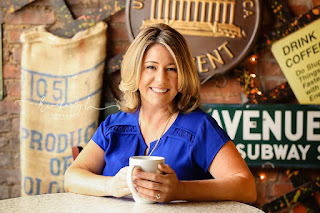
What’snext?
I'mactually sitting in a hotel room right now doing a final edit of ISLE OF EVER2! There are three books planned for the series, so I've spent a lot of timefiguring out what parts of the mystery we will learn in books one, two, andthree. It's been so much fun creating a story that continues to build andchange with each new book.
Wherecan we find you?
I'vegot a website: www.jencalonitaonline.com -- where readers will find a few freeshort stories and fun information on my books. I'm also on Instagramat @jencalonita and on TikTok talking abouts as @jencalonita aswell.
Pre-Order & Get Exclusive Signed Map
March 4, 2025
Interview With Bree Paulsen, Author / Illustrator of The Firelight Apprentice

Welcome to Smack Dab, Bree! Please tell us a bit aboutThe Firelight Apprentice.
It’s a story following two sisters in a worldpost-war, mourning the loss of their mother while they seek a mentor for theyoungest sister so she can better control her magic.
I ’ m a writer who within the past couple of years gotback into art. My graphic novel reading has absolutely exploded in that time.Were you always a comic or graphic novel reader?
To a degree, definitely as much as I am now. I think Ialways wanted to read comics when I was young, but jumping into it always feltdaunting back then as there weren’t as many outlets outside of collecting capecomics. I grew up in a household that had books about comics around, like Howto Draw Comics the Marvel Way by John Buscema and Stan Lee, but mostof my comic reading came from comic sections in kids’ magazines and a couplerandom volumes of manga I picked up at book fairs.
How do you plot out your books? A graphic novel issuch an enormous undertaking, and yours is rich with so many themes – the impact of war,finding your place in the world, the binds of family …
From the concept, I will beat out the story with anoutline before expanding that into a script. Though, The FirelightApprentice is a special case that is based on a dream so I had the basicbeats of the story from the start; I just had to work them into a narrativethat made more sense, fleshing out the world-building in the process and thespecific themes I explore.
What comes first, character sketches or an idea for astory?
Usually I have an idea first for a story, butsometimes I’ll start drawing a character and a story will start to form aroundthem. This was the case with Garlic from my debut graphic novel, Garlic andthe Vampire.
What are your favorite tools?
The Photo Booth app on my computer. It helps so muchwhen I am struggling to find reference for a pose or hand position. 3D modelingprograms like Blender are also extremely handy for working out an environmentor when I need to turn a prop in space.
I feel like one of your greatest strengths as anartist is in facial features and expression. Often, I felt like we got anentire page of exposition in one panel / closeup – how do you approachfacial drawing?
This is definitely my animation education coming outto shine. I had to learn how to act through my drawings when animating and ithas helped so much in making sure expressions are just right on a page.
I also loved your action scenes. How do you makeaction make sense in static images? How do you make it appropriate for youngerreaders?
I’m glad you like the action scenes. I feel that iswhere I could improve upon the most. I basically pored over some of my favoritemanga and comics for how they handled motion and explosions.
One of the draws to children ’ s books, I think, is the way they just bubble overwith magic. In your book, magic is far more than a metaphor. But you make sureto depict that magic is delightful but also dangerous – I loved that it wasplaced side-by-side with electricity (the father ’ s bulb store). Can you speak to this a bit, and whyyou presented magic this way in an MG?
It feels weird to say that it just makes sense? Iguess I approached magic from a realistic way, seeing how it would be harnessedin the day-to-day, but also by those who hold power. Like of course if magicwas real, it would be used as a power source, and of course, it would beweaponized and used in war.
Drawbacks were also important. I didn’t want magic tobe this thing that could solve all problems. Being someone who could conjure itneeded to be sort of a blessing and a curse, which is what we see with Safi andher “growing pains.” Adding these complexities makes the story more interestingand gives finding a mentor for Safi higher stakes, because she couldaccidentally blow something up or make her a lure for a lich, but also themagic will physically hurt her if she is not given proper outlets.
I ’ ll admit, this was the first time I ’ d ever heard of a lich. (This is a bit embarrassing,but I Googled it to see if it was something you had invented or part of a kindof larger folklore.) It does offer kind of the perfect antagonist in a story ofmagic. What did you hope that young readers would take from the depiction ofthis antagonist?
Like you mentioned earlier, magic in this story ismetaphorical. Sometimes there is an aspect of yourself that others will preyupon, and who those predators are may not be obvious at first.
What do you hope young readers take from The FirelightApprentice, more than anything?
The importance of bonds and community, especially inscary times like these. We have to look after one another, and stand up againstpowers that wish to exploit and belittle.
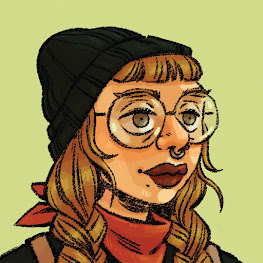
What ’ s next?
I’m currently working on a YA adaptation of Draculathat is from Mina’s point of view. It has been a challenging project, but I’mvery eager to share it once it’s done.
Where can we find you?
I am @ breebird33 on most of social media these days,most active on Bluesky. I also have my website vampiresnwhimsy.com which I update somewhat regularly, including upcomingbook events.
March 3, 2025
Poems to Welcome Spring
Hello! Spring is coming!
With that in mind, I offer you a few poems from my ArtSpeak! series (now in its 10th year!) of weekly poems inspired by art... and a poetry book suggestion below! May they help put spring in your heart a few weeks early. Thanks so much for reading!

"Spring Reminder" by Irene Latham

"When I Ride My Bike in Spring" by Irene Latham

"Two Parrots Take a Walk Together" in Spring by Irene Latham

"Spring Forward" by Irene Latham
Want MORE poetry?
Of course you do!
May I suggest If I Could Choose A Best Day: Poems of Possibility, poems selected by Irene Latham & Charles Waters, illustrations by Olivia Sua, coming TOMORROW from Candlewick Press! It's PERFECT for spring reading and gifting.

March 2, 2025
Middle Grade Fiction for Spring
Middle Grade Fiction for Spring
Now that spring is right around the corner (although it felt like winter here today!), I thought I'd share a few recent interviews with middle grade writers from my blog, Book Q&As with Deborah Kalb.
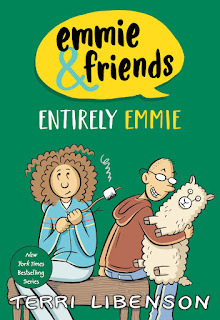
I've interviewed Terri Libenson many times about her wonderful Emmie & Friends graphic novel series, and our latest Q&A focused on her newest novel, Entirely Emmie. I asked her about the theme of friendship in the story, and she said, "I love unlikely friendships, and that’s also an ongoingtheme in many of my books. I think it shows that you don’t always have to havethe same likes, outlooks, or interests to strike up a friendship. Sometimes it just occurs spontaneously or when you’re throwninto a situation together (in this case with Emmie and Joe or with Anthony andLeah in Always Anthony). I’ve had friendships like that myself, and they’vebeen so valuable to me."
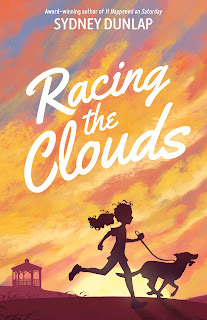
Sydney Dunlap's compelling new middle grade novel is titled Racing the Clouds. I asked her how she created her protagonist, Sage, a girl who's dealing with difficult family circumstances. She said: "I wanted to write about a character who is in a difficultsituation but has ways to help herself through it. That’s how I decided thatshe should be a runner. Sage's love of running also serves to connect her withher mom. And Sage's love of animals helps her through hard timestoo and makes it possible to bridge the gap with her grandmother. Sage has conflicting feelings when she’s invited to visitthe grandparents she has never met—and I thought it would be interesting toexplore a character who struggles with guilt for something that really isn’ther fault, and then puts it on herself to try to fix a situation she hadnothing to do with."

Last but not least, Ann E. Burg's thoughtful new middle grade novel in verse, Force of Nature, takes a look at the life of environmentalist Rachel Carson. Burg told me, "I had been reading up on climate change and actuallywondering what one person could do. I kept coming across snippets of RachelCarson’s writings, and while I knew she is considered by some to be the motherof the environmental movement, I knew very little about her life. I thought itwas time to reintroduce her to a younger audience."
Happy reading, everyone!
--Deborah Kalb
February 25, 2025
Shadows and Highlights - Snow Edition (Holly Schindler)
This week, we got hit with the biggest snowstorm of the year. Not as big as predicted (15"), but big enough (7").
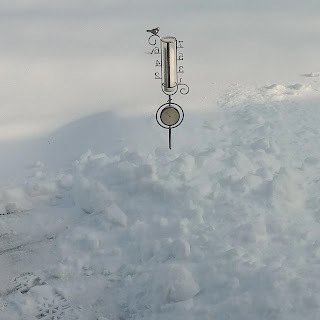
That rain gauge of mine is backward because it got blown around by the wind and I took the pic through the back door. It was also a wind chill of -20 (!), so there was no way I was going out there if I didn't have to.
I love this picture, though--mostly, I love the sun on the snow just behind the shadow closest to the camera.
Isn't that the way it always is, when we are in the midst of a cold and shadowy time? Isn't there always a little sun just beyond it?
~
Holly Schindler is the author of The Junction of Sunshine and Lucky
February 23, 2025
Chiaroscuro of Writing: Smack Dab in the Imagination by Dia Calhoun

Ginevra de' Benci Leonardo da Vinci
Our imagination is like chiaroscuro with its dazzling drama. Chiaroscuro was a painting technique developed in the Renaissance that used highlights and shadows—bold contrasts of light and dark—to create depth, drama, and dimensionality. Think Rembrandt, Artemisia Gentileschi, and Leonardo da Vinci.Our writing imagination is a wizard at conjuring from theshadowy whirlwinds in our minds. All the images, ideas, experiences, emptionsspin in the darkness, and somehow imagination pulls them out, recombined, intothe light. That wondrous ah-ha! moment is a highlight of the creative process. This is one of the things I love best about writing. It’s why I follow thewriting maxim: “no surprise for thewriter, no surprise for the reader.” (I don’t recall who first said that.)
If I learn nothing new when writing a poem, take nodeparture from my original inspiration, the poem lacks depth. No highlights, noshadows—no richness. When writing novels, I never plot anything out to the nthdegree. I don’t want to work in a zone where every turn is planned, but in aliving zone. Yes, ah-ha’s emerge in planning and plotting, but my own work ismost alive when I leave room for my imagination to leap from shadow to bright ah-ha atevery step in the process.
February 20, 2025
Interview with Sydney Dunlap, Author of Raing the Clouds
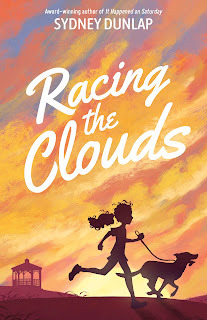 Welcome back toSmack Dab, Sydney! You’ve visited with us previously, about your book ItHappened on Saturday. Tell us more about Racing the Clouds.
Welcome back toSmack Dab, Sydney! You’ve visited with us previously, about your book ItHappened on Saturday. Tell us more about Racing the Clouds.Thank you so much forhaving me, Holly! It’s great to be back.
The story begins after13-year-old Sage hears from her grandparents—her mom’s parents, who she’s nevermet—for the first time in her life. They invite her to visit, and she wants tofix what’s gone wrong in her family, so she flies to Ohio by herself as soon asschool gets out for the summer. She feels an almost immediate connection withher grandfather, but her grandmother is so strict and formal that it doesn’tseem they’ll ever see eye-to-eye. Sage learns that family relationships—andpeople—can be much more complex than they appear on the surface. She alsobegins to understand more about the power of forgiveness and how to find herway forward during a difficult time.
I admire how youtackle such tough topics for young readers. Last time, it was childtrafficking. This time around, you’re tackling addiction and familyestrangement. What brought you to these topics?
I’ve always lovedreading books about real things that happen to real kids—books that tacklesubjects that are a part of many people’s lives but can be hard to talk about.My two favorite authors while growing up were Katherine Paterson and Judy Blumebecause they both showed so much respect for their readers in writing aboutlife as it really is. As an author myself, I’ve found that the stories I mostwant to share with the world are about the hard stuff too. Books can be suchgreat conversation-starters, providing glimpses into life experiences verydifferent from one’s own, or offering a chance for self-reflection on morefamiliar events/circumstances.
Of course I have toask about how you approach these tough topics. But I’m also curious about whatyou learned from the first book–through reception to the book, interactionswith young readers. What did all that teach you before you drafted this book?
I try to approach toughtopics in a way that leaves readers feeling hope as they see my charactersfinding their own resilience. I also like to include relatable situations—withfamily, friends, school, etc—along with the more difficult subject matter, sothe readers will find familiarity within the pages. My books include lightmoments as well as animals such as dogs, cats, and horses, so there are plentyof warm and fuzzy parts too.
As far as the nextpart, I’ve learned that for me, the most important part of this whole processis to find and keep my joy in it. The publishing world is so full of ups anddowns, and it can become easy to fall into the trap of feeling like you alwaysneed to be doing something more, checking one more item off your to-do list,then adding another—that you’re never doing enough. I think it’s important toremember to take a step back and just appreciate how amazing it is to have astory that is dear to your heart being read by people all around the world. Andinteracting with young readers is a wonderful part of it—my favorite type ofevent is a school visit where all the students have read the book—it’s reallyfun to hear their questions and comments since they know the characters sowell!
I’m an animal person, and I’malways intrigued by the depiction of animals in literature. You use Nicky as acatalyst for connection between characters. What brought you to this?
I love dogs more thanjust about anything. As I write this, my dog is sitting on a couch a few feetaway from me. Usually he’s underneath my desk when I write, but always close athand. My own extended family includes people with very different outlooks andlife experiences, but the one thing everyone has in common is a love for dogs.At a large gathering, the people sitting around the table may have differentopinions on current events or other potential conversation topics, but everyoneagrees about how great dogs are. I’ve been fortunate to have dogs in my homefor most of my life, and their soulful eyes, tail wags, and the overallpositivity they bring to any situation has always amazed me.
The theme of forgiveness is powerfully handledthroughout. It’s depicted as an ongoing process here. You even tackle the ideaof self-forgiveness (the hardest of all, it always seems), as Sage has toattempt to forgive herself for her mother’s accident. Did this thread comenaturally? What made you want to address forgiveness specifically?
While writing Sage’sstory, I was thinking about how we all make mistakes, and we all have things wewish we could have done differently. We can rehash them over and over, losingthe peace of the moment we’re in, or we can pick ourselves up, dust ourselvesoff, and look forward, trying to take the lessons we’ve learned from the pastwith us to whatever’s next. Since doing that involves a degree of forgivenessof both self and others, it just came out of my heart as something I wanted toaddress in hopes that it could touch my readers as well.
I loved themulti-generational aspect of the story. How did you go about developing theparallel between Grandmother Marion's brother and Mom's addiction? How did yougo about crafting Pawpaw as a bridge between the generations?
I knew that there hadto be a reason that Grandmother Marion was so worried about Sage’s dad being arock musician that went deeper than just not liking the music. Although she’sstrict and formal by nature, Grandmother Marion isn’t a tyrant intent on ruiningeveryone’s fun, as she first seems to Sage. I think it’s important to take notethat people’s actions usually have motivations that go a lot deeper than what’sapparent on the surface, and Grandmother Marion’s attempts to control so manythings stem from anxiety and loss. I think it helps us all to think about thereasons behind other people’s actions to gain a better understanding of them.While writing the story, Pawpaw just came to me as this sweet grandfather whomeans well and really cares, but also has to work at finding the right thing todo. Sometimes trying to be the peacemaker isn’t easy either.
Music is woventhroughout the story, from Dad's past as a musician to the concert Sageattends. What role did you want music to play in the narrative?
Music can really bringpeople together, or in some cases, tear them apart. Sage and her parents sharea love of music and find attending concerts a great thing to do together. Inspite of her love of and talent for the drums, Sage stops playing due to herguilt, but I think there’s a hint that she might resume in the future. My hopefor her dad would be that he can gradually begin teaching music lessons andeventually spend more and more time sharing his skills and focusing on whathe’s passionate about.
Throughout Racing the Clouds, we see different economicrealities: the trailer park where Sage and her dad live, to her grandparents'large house with its Cadillac and fancy maple syrup. How did you approachwriting about these class differences without making them the focus of thestory, while still acknowledging their impact on Sage's perspective?
I tried to keep them inthe background while still having them present throughout the book. I rememberhearing the amazing Marcus Zusak speak once at a library event, and he talkedabout the importance of the little details in making a story feel real. That’swhy small details—like how hard it is to get the water temperature the way Sagewants it at the beginning of the story, or the kind of glass the maple syrupcomes in—matter a lot. In this story, they serve to show a contrast for Sagebetween the experiences she’s had and the way her mom grew up, and they alsohelp her to realize that she wouldn’t have traded her life with her parents foranything.
What do you hopeyoung readers take from Sage’s story?
I hope they can gainsome perspective on the importance of taking a moment to sit in other people’sshoes and see things from their point of view, and to think about the power offorgiveness and the importance of having the hard conversations. I also hopethey learn some things about what drugs can do to a person’s life and how tostay safe.

What’s next?
I have a lot of book-related travel and many author eventsplanned for 2025. As a teacher for 18 years, I love doing school visits andtalking with students, and I also love any and all events that bring togetherteachers, librarians, and authors.
Where can we find you?
I’m on Instagram at@sydneydunlapwrites, Bluesky at @sydneydunlap@bsky.social, Facebook atSydney Dunlap, and my website is www.sydneydunlap.com.
February 15, 2025
Causal Chain Experience Redux
Inspired by Holly’s recent discussion on chapter breaks, I thought I’d revisit an old post I wrote a couple of years ago. The causal chain experience.
Remember, narrative structure is a sequence of cause and effect. Stories are formed by an interlinked sequence: Event A causes Event B (and so on). One event, one decision triggers the next one, and the next one. To reinforce both action (external) and emotional (internal) plot movements, build tension, and create strong drama, a writer needs to be mindful of the story’s causal chain.
Harrison Demchick (The Writer's Ally) offered a wonderful analogy on this concept. Think of plot as a twisted layout of dominoes, and every plot beat in your narrative is a single domino. The first domino is the inciting incident, and once tipped, it launches a succession of plot beats. This is the rising action. Over the course of the story, there are complications, subplots, and dramatic turns. This rising action reaches a peak, and there’s anticipation – upon baited breathe, perhaps even a dash of hope -- about what comes next. And ultimately, with the climax, the hero emerges.
Weak plots tend to follow a “This happens, then this happens, and then this happens” formula. Such a plot is reduced to a series of unrelated scenes. A stronger method for mapping a plot is using the formula, Therefore + But. In this way, the plot unfolds logically, and every scene also becomes relevant. Returning to the domino analogy: while the author may push the first domino over (the inciting incident), the readers cannot help but stay engaged and in awe as several thousand dominoes fall consequently.
In other words, the power in any plot beat is not the beat itself. It’s how the character got there. And this unfolding drama is built upon the causal chain.
To strengthen your narrative structure, you can outline your causal chain at the planning stage. Write the events of your story in a series of cause and effect. Once you create this outline, revisit each event to determine which cause/effects relationship needs to be explained or implied.
Everything that happens should be the effect of what precedes it. If readers don’t understand why the car broke down when it did, or why the dragon showed up at that moment, or why the roommate left when she did, even if the event is off stage, then it may be issues with causation. The causal chain builds trust between reader and writer because it implies the rules that govern the worlds in the narrative, and the consequences of character choices.
Cause without effect is like a single domino set up alongside, but not within, the domino chain. If the domino can be removed without effecting the chain, then the domino isn’t necessary. Likewise, if you can remove a scene, or a sequence from the manuscript without notable effect on the surrounding action, it reflects a weakened causal chain.
So, what does a strong causal chain do? The very nature of a strong causal chain -- like dominoes-- creates anticipation and builds tension that leads to a dramatic, emotionally satisfying finale.
For a masterful visual of a causal chain, check out this video, in which pro domino artist Lily Hevesh uses 32,000 dominoes to create a massive domino chain, taking 82 days to build.
This is the perfect illustration that demonstrates how a causal chain works in Story. Each subplot must connect to and ultimately affect the broader action.
Thank you for reading! Bobbi Miller
February 12, 2025
A Middle Grade Book Review by Darlene Beck Jacobson
Shadow. This is the theme for this month and I have a wonderful book I'm going to share that brings a bit of 20th Century history out from the shadows of the Official Secrets Act of WWII.
Even though the book is historical fiction, it is definitely grounded in truth as to what happened during that time in history.
As a lover and author of historical fiction, here is one you won't want to miss THE BLETCHLEY RIDDLE written by award-winning authors RUTA SEPETYS and STEVE SHEINKIN.
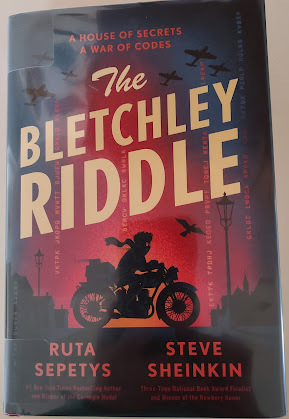
THE BLETCHLEY RIDDLE by Ruta Sepetys & Steve Sheinkin
An unforgettable story of codes, cyphers, secrets andmystery. Siblings Jakob and Lizzie navigate the secret world of Bletchley Parkin England during the early years of WWII. Lizzie is searching for answers toher mother Willa’s disappearance. Jakob is working on helping to break theEnigma codes so Britain can defeat Nazi Germany. But with the Official SecretsAct, no one can talk about anything that happens at Bletchley.
Pepperedwith wonderful period details of real-life during war time immerses readersinto this story of courage and daring. A fast-paced wonder of a story that anylover of history will devour and remember. One of the best books of 2024.
Darlene Beck Jacobson loves reading historical fiction and sharing the books with young readers.



